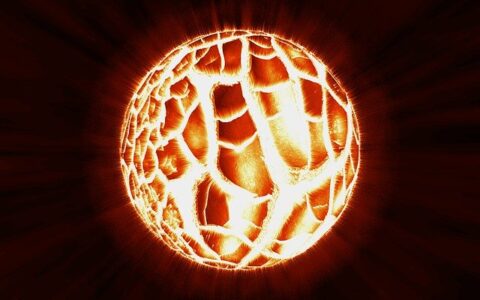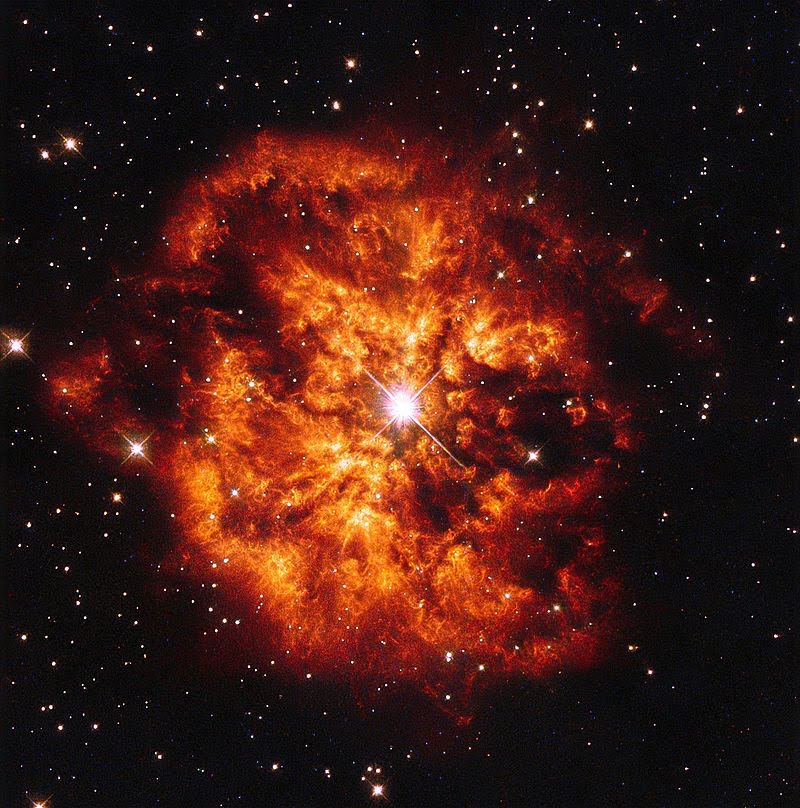Supernova explosion traced to one of the hottest kind of stars
Context:
Indian astronomers have tracked a rare supernova explosion and traced it to one of the hottest kind of stars called Wolf–Rayet stars or WR stars.
The rare Wolf–Rayet stars are highly luminous objects a thousand times that of the Sun and have intrigued astronomers for long. They are massive stars and strip their outer hydrogen envelope which is associated with the fusion of Helium and other elements in the massive core. Tracking of certain types of massive luminous supernovae explosion can help probe these stars that remain an enigma for scientists.
What is Supernova?
- All the stars burn nuclear fuel in their cores to produce energy.
- The heat generates internal pressure which pushes outwards and prevents the star from collapsing inward due to the action of gravity on its own mass.
- But when the star ages and runs out of fuel to burn, it starts to cool inside.
- This causes a lowering of its internal pressure and therefore the force of gravity wins; the star starts to collapse inwards.
- This builds up shock waves because it happens very suddenly, and the shock wave sends the outer material of the star flying. This is what is perceived as a supernova. This happens in very massive stars.
Where Do Supernovas Take Place?
- Supernovas are often seen in other galaxies. But supernovas are difficult to see in our own Milky Way galaxy because dust blocks our view. In 1604, Johannes Kepler discovered the last observed supernova in the Milky Way. NASA’s Chandra telescope discovered the
- remains of a more recent supernova. It exploded in the Milky Way more than a hundred years ago.
What Causes a Supernova?
- A supernova happens where there is a change in the core, or center, of a star. A change can occur in two different ways, with both resulting in a supernova.
- The first type of supernova happens in binary star systems. Binary stars are two stars that orbit the same point. One of the stars, a carbon-oxygen white dwarf, steals matter from its companion star. Eventually, the white dwarf accumulates too much matter. Having too much matter causes the star to explode, resulting in a supernova.
- The second type of supernova occurs at the end of a single star’s lifetime. As the star runs out of nuclear fuel, some of its mass flows into its core. Eventually, the core is so heavy that it cannot withstand its own gravitational force. The core collapses, which results in the giant explosion of a supernova. The sun is a single star, but it does not have enough mass to become a supernova.
Why Do Scientists Study Supernovas?
- A supernova burns for only a short period of time, but it can tell scientists a lot about the universe.
- One kind of supernova has shown scientists that we live in an expanding universe, one that is growing at an ever increasing rate.
- Scientists also have determined that supernovas play a key role in distributing elements throughout the universe. When the star explodes, it shoots elements and debris into space. Many of the elements we find here on Earth are made in the core of stars. These elements travel on to form new stars, planets and everything else in the universe.
How Do NASA Scientists Look for Supernovas?
- NASA scientists use different types of telescopes to look for and study supernovas. Some telescopes are used to observe the visible light from the explosion. Others record data from the X-rays and gamma rays that are also produced. Both NASA’s Hubble Space Telescope and Chandra X-ray Observatory have captured images of supernovas.
- In June 2012, NASA launched the first orbiting telescope that focuses light in the high-energy region of the electromagnetic spectrum. The NuSTAR mission has a number of jobs to do. It will look for collapsed stars and black holes. It also will search for the remains of supernovas. Scientists hope to learn more about how stars explode and the elements that are created by supernovas.


